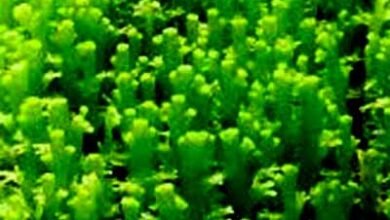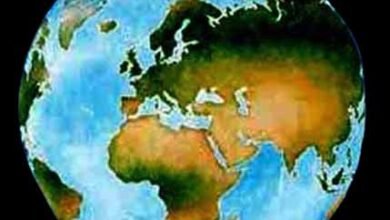
Related to Biology- 142-B
|
1. Women have half a liter less blood than men. 2. Conduction of digested food and hormones in the body is done through plasma. 3. The life span of red blood corpuscles (RBC) is 100 to 120 days. It contains hemoglobin due to which the color of blood is red. 4. Hematin is an iron compound found in hemoglobin. 5. The main function of RBC is to transport oxygen to every cell of the body and bring out carbon dioxide. 6. When there is less amount of hemoglobin, there is a disease called blood deficiency (anemia). 7. Blood acts to control body temperature and protect the body from diseases. 8. Blood platelets corpuscles protect the blood by forming a blood clot on the spot or wound. 9. White blood cells eat harmful bacteria and viruses. 10. The essential protein for formation of blood clot is fibrinogen. 11. Blood maintains water balance in the body. 12. The main cause of differentiation of human blood is the Glyco protein found in red blood corpuscles (RBC), which is called antigen. 13. Blood group O is called the universal donor. 14. In which there is no antigen from both (A and B), it is called blood group O. 15. Blood group A B is called universal recipient blood group, because there is no antibodies in it. 16. Insulin regulates the formation of glycogen from glucose. 17. The blood vessel carrying blood from the body to the heart is called ‘vein’. 18. Increasing the amount of glucose in the blood is called diabetes. 19. Diabetes occurs due to insufficient secretion of insulin. 20. Vein contains impure blood ie blood containing carbon dioxide. An exception to this is the Pulmonary vein. 21. Pulmonary vein carries blood from the lungs to the left atrium, which contains pure blood. 22. The blood vessel carrying blood from the heart to the body is called an artery; pure blood in the artery means oxygen-rich blood. An exception to this is the pulmonary artery, the pulmonary artery carries blood from the right ventricle to the lungs, which contains impure blood. i.e deoxygenated blood. 23. There is impure blood in the right part of the heart and pure blood in the left part. 24. The impure blood from the body goes from the right atrium to the right ventricle again into the lungs. 25. Pure blood enters the body from left lung to left atrium and left atrium to left ventricle. 26. Carbon dioxide present in the blood increases the heart rate by decreasing the pH of the blood, that is, acidification increases the heart rate and alkalinity decreases the heart rate. 27. In normal state, the heart of a human heart beats 72 times in a minute (150 times in fetal state) and about 70 milliliters in one heartbeat. Pumps blood. 28. The vessel that carries blood to the heart muscle is called the coronary artery. In this, heart attack occurs due to any type of obstruction. 29. Sickle cell anemia is a genetic disorder of blood (Red blood cells). In this, the normal blood cells turn sickle-shaped from their normal shape and block blood flow in fine vessels. 30. Haemophilia is a genetic disorder of the blood, where blood fails to clot and causes excessive bleeding after any injury. Dr. (Prof.) Amarendra Kumar ========== ========= =========== जीव विज्ञान से संबंधित– 142-B. 1. महिलाओं मे पुरुषों की तुलना मे आधा लीटर कम रक्त होता है. 2. पचे हुए भोजन एवं हार्मोन का शरीर में संवहन प्लाज्मा के द्वारा होता है. 3. लाल रक्त कण (RBC) का जीवन काल 100 से 120 दिन का होता है. इसमें हीमोग्लोबिन होता है जिसके कारण रक्त का रंग लाल होता है. 4. हीमोग्लोबिन मे पाया जाने वाला लौह यौगिक हीमैटिन है. 5. RBC का मुख्य कार्य शरीर की हर कोशिका मे आक्सीजन पहुंचाना तथा कार्बन डाई आक्साइड बाहर लाना है. 6. हीमोग्लोबिन की मात्रा कम होने पर रक्त क्षीणता (एनीमिया) नामक रोग हो जाता है. 7. रक्त शरीर के ताप का नियंत्रण तथा शरीर को रोगों से रक्षा करने का कार्य करता है. 8. रूधिर की प्लेट्लेट्स कणिकाएं स्थान या घाव पर रूधिर का थक्का बनाकर उसकी रक्षा करती हैं. 9. श्वेत रूधिर कणिकाएं हानिकारक जीवाणुओं एवं विषाणुओं का भक्षण करती हैं. 10. रक्त का थक्का बनने के लिए अनिवार्य प्रोटीन फाइब्रिनोजन है . 11. रूधिर शरीर मे जल संतुलन को बनाये रखता है. 12. मनुष्य के रक्तों की भिन्नता का मुख्य कारण लाल रक्त कण (RBC) मे पायी जाने वाली ग्लाइको प्रोटीन है, जिसे एन्टीजन कहते हैं. 13. रक्त समूह O को सर्वदाता रक्त समूह कहते हैं. 14. जिसमे दोनों (A तथा B) मे से कोई एन्टीजन नहीं होता है, वह रूधिर वर्ग O कहलाता है. 15. रक्त वर्ग A B को सर्वग्रहता रक्त समूह कहते हैं, क्योंकि इसमे कोई एण्टीबाडी नही होता है . 16. इंसुलिन ग्लुकोज से ग्लाइकोजिन बनाने की क्रिया को नियंत्रित करता है. 17. शरीर से हृदय की ओर रक्त ले जाने वाली रक्त वाहिनी को ‘शिरा’ कहते हैं. 18. रूधिर मे ग्लूकोज की मात्रा बढ़ना मधुमेह कहलाता हैं. 19. इंसुलिन के अल्प स्रवण से मधुमेह नामक रोग होता है. 20. शिरा मे अशुद्ध रक्त अर्थात कार्बन डाई आक्साइड युक्त रक्त होता है. इसका अपवाद पल्मोरीन शिरा है. 21. पल्मोनरी शिरा फेफडे से बायें अलिंद मे रक्त को ले जाती है , इसमे शुद्ध रक्त होता हैं. 22. हृदय से शरीर की ओर रक्त ले जाने वाली रक्त वाहिनी को धमनी कहते हैं, धमनी मे शुद्ध रक्त अर्थात आक्सीजन युक्त रक्त होता है. इसका अपवाद पल्मोनरी धमनी है, पल्मोनरी धमनी दाहिने निलय से फेफड़े मे रक्त पहुंचाती है , इसमे अशुद्ध रक्त होता है. 23. हृदय के दायें भाग मे अशुद्ध रक्त तथा बायें भाग मे शुद्ध रक्त होता है. 24. शरीर से अशुद्ध रक्त दायां अलिंद से दायां निलय फिर फेफडे मे जाता है. 25. शुद्ध रक्त फेफडे से बायां अलिंद,बायां अलिंद से बायां निलय फिर शरीर मे प्रवेश करता है. 26. रूधिर मे उपस्थित कार्बन डाई आक्साइड रूधिर के PH को कम करके हृदय की गति को बढाता है, अर्थात अम्लीयता हृदय की गति को बढाती है तथा क्षारीयता हृदय की गति को कम करती है. 27. सामान्य अवस्था मे मनुष्य का हृदय एक मिनट मे 72 बार (भ्रूण अवस्था मे 150 बार) धड़कता है तथा एक धड़कन मे लगभग 70 मि.ली. रक्त पम्प करता है. 28. हृदय की मांसपेशियों को रक्त पहुंचाने वाली वाहिनी को कोरोनरी धमनी कहते हैं. इसी मे किसी प्रकार की रूकावट होने पर हृदयाघात होता है. 29. सिकल सेल एनीमिया रक्त (लाल रक्त कोशिकाओं) का एक आनुवंशिक विकार है. इसमें सामान्य रक्त कोशिकाएं अपने सामान्य आकार से सिकल के आकार की हो जाती हैं और महीन वाहिकाओं में रक्त प्रवाह को अवरुद्ध कर देती हैं. 30. हीमोफीलिया रक्त का एक आनुवंशिक विकार है, जिसमें चोट लगने के बाद रक्त का थक्का नहीं बन पाता और अत्यधिक रक्तस्राव होता है. डॉ, (प्रो.) अमरेंद्र कुमार.
|






